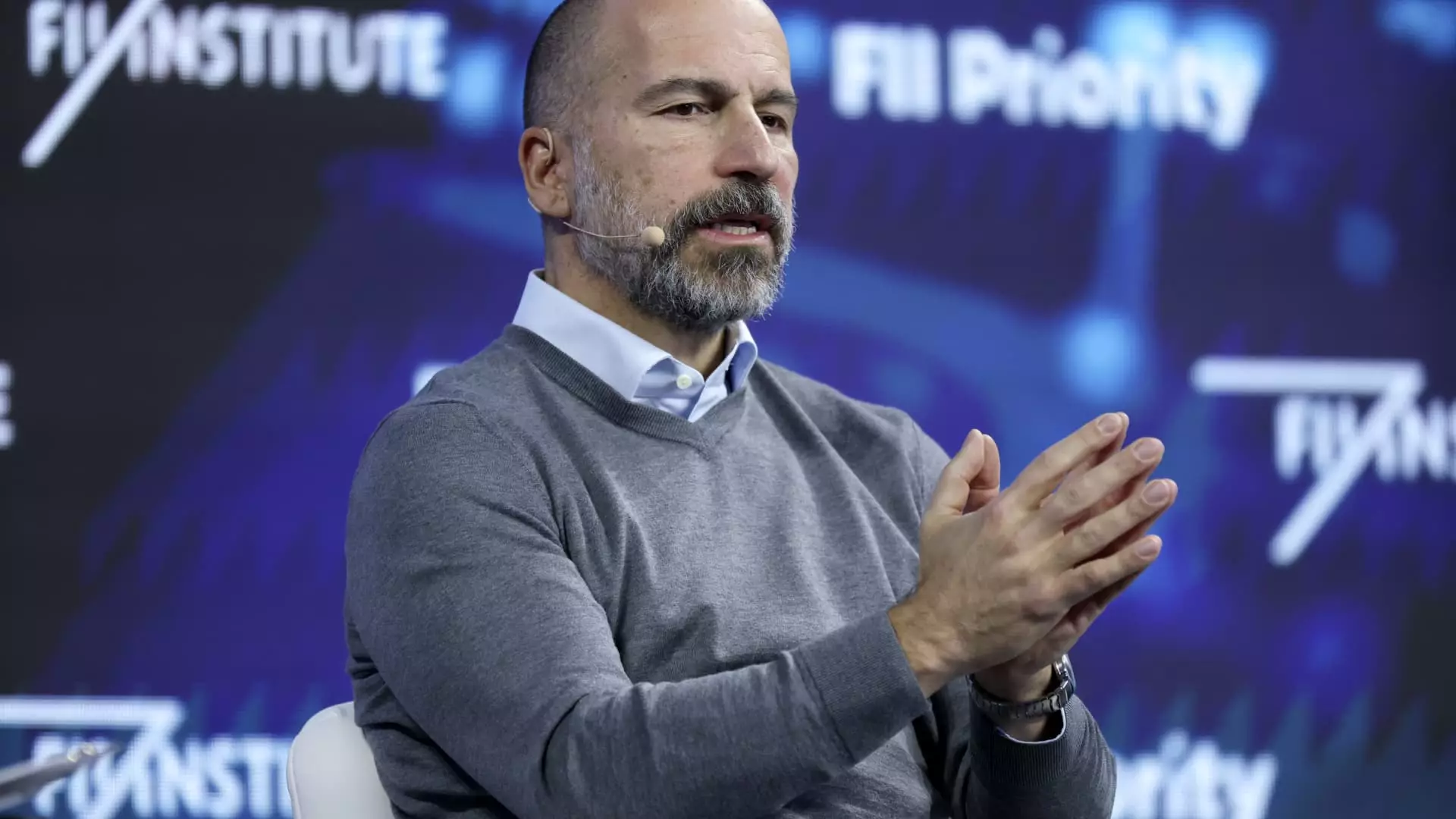Uber’s first-quarter financial results provide a complex picture of a company driving significant growth in some areas, yet confronting substantial hurdles in others. While the ride-hailing giant reported earnings per share that spectacularly eclipsed analysts’ predictions—83 cents versus the anticipated 50 cents—it fell short in revenue with $11.53 billion against forecasts of $11.62 billion. This discrepancy triggered a reaction from investors, leading to a roughly 5% decline in share value post-announcement. It’s clear that while Uber has successfully navigated some parts of its business, it simultaneously faces pressure in fulfilling revenue expectations.
The company’s revenue growth reflects an approximate 14% increase year-over-year, suggesting that demand for Uber services continues to be robust. However, the failure to meet revenue estimates raises questions about revenue sustainability and market dynamics. The juxtaposition of high earnings with lower-than-expected revenue growth could hint at potential volatility within the company’s financial landscape moving forward.
Ambitious Projections and Defensive Legal Challenges
Uber’s leadership displays confidence in their business trajectory, projecting gross bookings to range between $45.75 billion and $47.25 billion for the current quarter. Nevertheless, beneath this optimistic forecast lies an underlying tension—the company is grappling with legal challenges, specifically a lawsuit from the Federal Trade Commission regarding alleged deceptive billing practices in its subscription service, Uber One. This scrutiny could impact customer trust, especially when 60% of gross bookings from Uber Eats come from subscribers of this service.
CEO Dara Khosrowshahi’s defense of Uber One highlights an interesting dichotomy. On one hand, he urges consumer understanding of the service’s simplicity in subscription management; on the other, such legal troubles emphasize the importance of consumer perception in maintaining brand loyalty in a fiercely competitive market. The tension between aggressive growth strategies and necessary consumer trust cannot be overstated.
Core Business Segments: Resiliency Amidst Growth
Diving deeper into Uber’s financial performance reveals that its core business segments are showing resilience. The Mobility sector reported $21.18 billion in gross bookings, reflecting a year-over-year increase of 13%, while the Delivery segment marked even more substantial growth with $20.38 billion, up 15%. Such growth indicates that consumers remain engaged with Uber’s offerings, and despite external challenges, the company has effectively expanded its user base, which now totals around 170 million—up 14% over the previous year.
These positive metrics are further underscored by the staggering 3.04 billion trips booked in the first quarter—a robust 18% rise compared to the same quarter last year. This data speaks volumes about consumer reliance on Uber’s services and suggests the potential for even higher growth as technology and services evolve.
The Shift Toward Remote Work and Employee Policies
In a shift that surprised some employees, Uber recently mandated a move towards more in-person work, requiring employees to be present in the office three days a week instead of two. This policy change, coupled with an increase in requirements for eligibility for paid sabbaticals, has fueled discontent among some staff members. While Khosrowshahi defends this decision as a necessity to enhance collaboration and performance, it raises critical questions about company culture and employee satisfaction in a post-pandemic world where flexible work arrangements are increasingly valued.
This juxtaposition of aggressive corporate policies against the backdrop of modern work-life expectations presents a challenge for Uber. Striking a balance will be essential as company initiatives may directly affect productivity and overall morale.
Investments in the Future: Autonomous Vehicle Strategy
Amidst these current challenges, Uber is clearly focused on the future, particularly through its investment in autonomous vehicles (AVs). Khosrowshahi has labeled AV technology as “the single greatest opportunity” for Uber, indicating a forward-looking approach that could redefine the logistical landscape of ride-hailing. This logistical pivot is not mere rhetoric; the company has successfully launched robotaxi services in select U.S. markets through its partnership with Waymo, which has reportedly exceeded performance expectations.
The prospect of integrating AV technology could not only optimize operational costs but may also revolutionize consumer interactions with the brand. Uber’s commitment to partnerships with various players in the autonomous space—including Volkswagen and Aurora—shows a proactive stance in this evolving sector, positioning the company to leverage technological advancements that could define its growth trajectory in the coming years.
Overall, while Uber faces significant challenges, its proactive steps and focus on innovation appear to be steering the company towards a promising future. The path is fraught with obstacles, but with strategic pivots and an analytical approach to growth, Uber is poised to remain a formidable player in the transportation ecosystem.


Leave a Reply